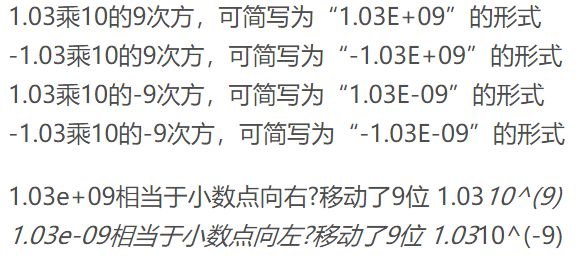1.科学计数法
https://blog.csdn.net/qq_43868654/article/details/98246842
e/E表示10的幂:

AeB,表示小数点在A上左移或者右移B次。
2.pytorch clip
import torch a=torch.tensor([1,2,3,4,5,6]) print(torch.clamp(a,2,5)) #输出: tensor([2, 2, 3, 4, 5, 5])
实现削减值。
3.python partial 函数
https://blog.csdn.net/qq_33688922/article/details/91890142
from functools import partial def mul(x,y): return x*y d=partial(mul,2,3) print(d) print(d())#也需要用括号来调用函数
#输出:
functools.partial(<function mul at 0x00000155E7B4FEA0>, 2, 3)
6
具体用就是这么用,可以使用partial固定参数,然后之后就可以随便调用,然后参数就是之前固定的。
5-30——
1.取数组的偶数列或奇数列
https://blog.csdn.net/liyundiyi/article/details/80586501
import torch pe=torch.randn(3,4) print(pe) print(pe[:,0::2]) print(pe[:,1::2]) #输出: tensor([[ 0.9722, 2.7667, -0.2812, 0.8444], [ 0.6217, -0.4831, 0.8454, 0.2377], [-0.1000, 0.2075, 1.0793, 0.6452]]) tensor([[ 0.9722, -0.2812], [ 0.6217, 0.8454], [-0.1000, 1.0793]]) tensor([[ 2.7667, 0.8444], [-0.4831, 0.2377], [ 0.2075, 0.6452]])
意思是,开始位置:结束位置: 步长(间隔数)。
6-1日
1.多元高斯分布(multivariate Gaussian )
https://zhuanlan.zhihu.com/p/30343287,这个讲的不错。
多元高斯分布能够自动捕获特征之间的相似度:

其中x是变量,μ是一个n*1的向量,Σ是一个n*n的协方差矩阵:
